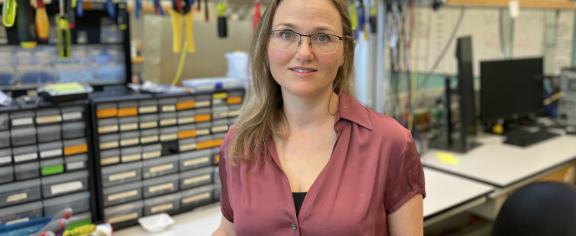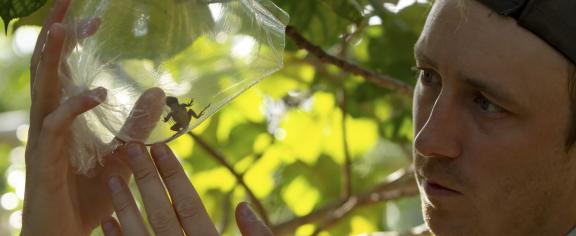2024-11-19
Sonali Kaluri, Seth Kinoshita, and Medina McCowin have been selected as walk-on recipients of the prestigious Stamps President's Scholarship, recognizing their exceptional academic accomplishments, leadership, and dedication to service.
2024-07-09
Up to 80% of infections in human bodies can be attributed to the bacteria growing in biofilms, and understanding how biofilms grow could lead to critical insights on controlling them.
2024-06-12
Researchers at Georgia Tech have developed a method using nanowires to deliver miRNA to T-cells, preserving their naïve state and significantly enhancing their effectiveness in adoptive T-cell therapy for fighting infections and potentially cancer.
2024-05-21
Han will investigate whether blocking specific neurons can help inhibit asthma — which may provide a new avenue for developing treatments.
2024-05-29
Melecio will focus on economic development for life sciences and biosciences.
2023-11-29
The National Institute of Health (NIH) has awarded Yunan Luo a grant for more than $1.8 million to use artificial intelligence (AI) to advance protein research.
2024-05-09
Biomedical engineer Annabelle Singer has spent the past decade developing a noninvasive therapy for Alzheimer’s disease that also could benefit patients with a host of other neurological disorders, from epilepsy to multiple sclerosis.
2024-05-02
Exercise is good for you. To understand why, MoTrPAC scientists are creating a whole-body map of molecular responses to endurance training — finding striking “all tissue effects” in a new set of studies, featured on the May cover of the journal Nature.
2024-05-02
The new interdisciplinary Ph.D. in Neuroscience and Neurotechnology is expected to enroll its first graduate students in Fall 2025. Sciences will also offer a new Minor in Neuroscience, beginning Fall 2024.
2024-04-30
Stroud joins nine newly appointed Fellows and ten ESA Early Career Fellows, elected for "advancing the science of ecology and showing promise for continuing contributions" in the field.









